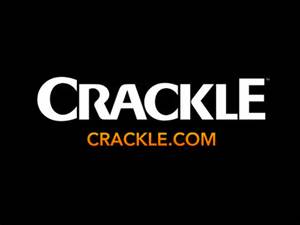Crackle Plus Gets Meta With Gracenote To Make Content More Searchable
Most streaming distributors already use Gracenote, simplifying integration

Streaming channel operator Crackle Plus said it has licensed program metadata from Nielsen’s Gracenote unit in order to make it easier for viewers searching for something to watch to find its content.

Gracenote’s metadata and content IDs are already used by most distributors, which will make it simpler to integrate Crackle Plus content into menus and recommendation engines, the companies said.
Crackle Plus, part of Chicken Soup for the Soul, has been expanding its ad supported video-on-demand products and will be launching free ad-supported streaming TV linear channel versions of its Crackle and Popcornflix brands.
Also: Making FAST Video Crackle Again with Philippe Guelton and Chicken Soup for the Soul
“We wanted to be able to enrich our content with more metadata and more imagery,” Rekha Peruvemba, director of product at Crackle Plus, told Broadcasting+Cable. “Gracenote is already utilized by a lot of the platforms we are live on, so it was the obvious next step as we continue to grow in the industry.”
Also: Gracenote Personalizes Program Guide Images to Boost Viewership
Peruvemba added that there are some distributors that only use Gracenote metadata, which meant until now, they wouldn’t carry Crackle Plus. She declined to identify those platforms.
Broadcasting & Cable Newsletter
The smarter way to stay on top of broadcasting and cable industry. Sign up below
“Using Gracenote’s IDs actually allows Crackle Plus to be launched on more platforms, so you see an immediate growth there,” she said.
Gracenote’s metadata includes information about a show or movies, such as its genre and cast, plus assets including photos that can be used to help viewers find it. And with the explosive growth of streaming--and the increasing appreciation of data--Gracenote is in a good position.
“Streaming is a very competitive marketplace at this point in time. You can be Disney and when you launch a new Marvel streaming show you’re pretty confident you’re going to draw an audience,” said Trent Wheeler, senior VP of product at Gracenote. “But when you don’t have something like that, what are you going to do? Your storefront is really search and discovery. Crackle’s got great content. Crackle's been around for a long time and has a very loyal audience base, but its content still has to be found.”
Most programmers have good metadata for their new and original content. But as time goes on, assets get lost or disorganized. That makes Gracenote’s catalogue invaluable, Wheeler said.
Since Gracenote’s metadata taxonomy has already been accepted by distributors, new content can be efficiently onboarded, without risk that search terms could be misunderstood or the need for manual integration by the distributor’s operations team.
“Those people are getting a hundred different feeds from channels,” Wheeler said. "It’s good to know that when you publish your content, your key downstream partners who are driving all your traffic can use it. In this ecosystem that’s a large benefit.”
Gracenote also offers clients personalized image and video descriptor products designed to help drive and optimize advanced discovery.
“The Gracenote technical team has been extremely helpful in trying to create a systematic way of pulling all of that information into our system,” Peruvemba said. "They’ve been a big help making sure that we know step by step exactly what we need to do to fully utilize everything they have available to us.”
Crackle Plus AVOD networks offer audiences over 90,000 hours of content across its network of streaming services. They are currently distributed through 50 touch points in the U.S. with plans to expand to over 64 touch points.■
Jon has been business editor of Broadcasting+Cable since 2010. He focuses on revenue-generating activities, including advertising and distribution, as well as executive intrigue and merger and acquisition activity. Just about any story is fair game, if a dollar sign can make its way into the article. Before B+C, Jon covered the industry for TVWeek, Cable World, Electronic Media, Advertising Age and The New York Post. A native New Yorker, Jon is hiding in plain sight in the suburbs of Chicago.

